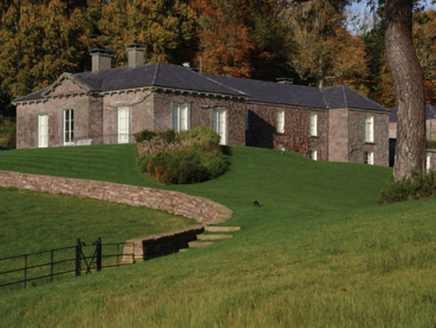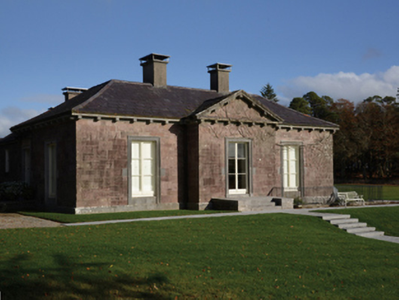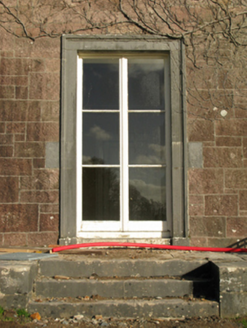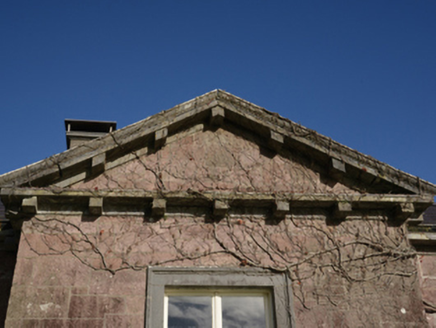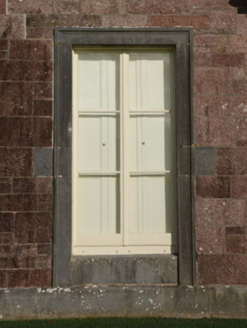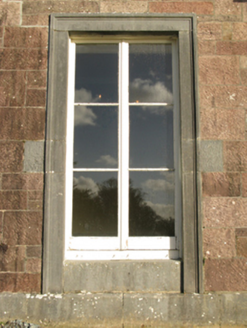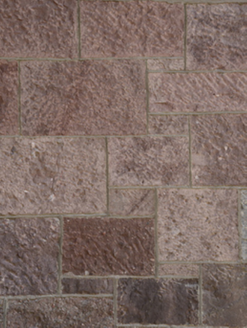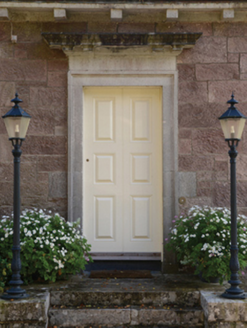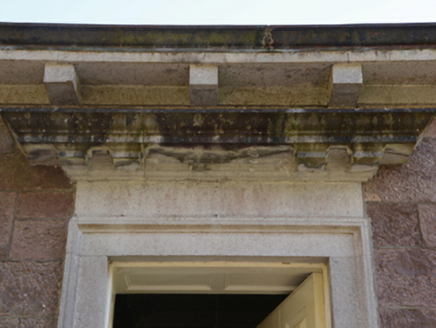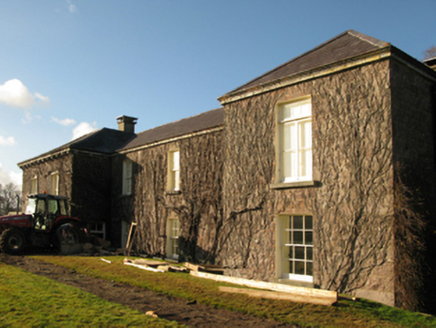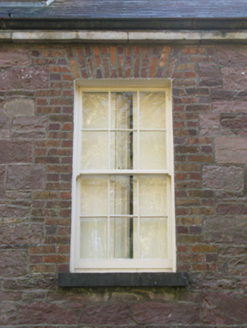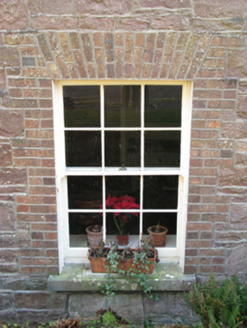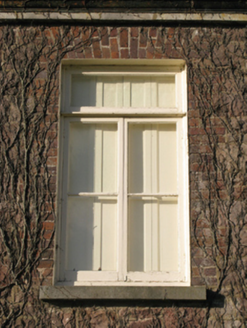Survey Data
Reg No
31310908
Rating
Regional
Categories of Special Interest
Architectural, Artistic, Historical, Social
Original Use
Hunting/fishing lodge
In Use As
Hunting/fishing lodge
Date
1850 - 1860
Coordinates
110003, 267449
Date Recorded
18/01/2011
Date Updated
--/--/--
Description
Detached three-bay (two-bay deep) single-storey over basement sporting lodge, built 1855-6, on a cruciform plan centred on single-bay single-storey pedimented breakfront; single-bay (three-bay deep) full-height central return (north). Extended, 1911-3, producing present composition. Hipped slate roof on a T-shaped plan centred on pitched (gabled) slate roof (breakfront), clay ridge tiles, paired cement rendered central chimney stacks having ogee-detailed cut-limestone capping, and cast-iron rainwater goods on dragged cut-limestone dentilated cornice. Part creeper- or ivy-covered snecked sandstone walls on lichen-covered dragged cut-limestone chamfered plinth with tooled cut-sandstone flush quoins to corners. Square-headed central opening approached by flight of three dragged cut-limestone steps with dragged cut-limestone surround framing "Torus"-detailed glazing timber French doors. Square-headed openings with dragged cut-limestone surrounds framing "Torus"-detailed glazing timber French doors. Square-headed window openings (north) with drag edged dragged cut-limestone sills, and red brick block-and-start surrounds framing six-over-six timber sash windows. Interior including central hall retaining carved timber surround to opening framing timber panelled shutters with carved timber surround to opposing door opening framing timber panelled door, and run moulded plasterwork cornice to ceiling centred on plasterwork ceiling rose; top-lit inner hall (north) on a square plan retaining carved timber surrounds to door openings framing timber panelled doors, and moulded plasterwork cornice to ceiling centred on lantern with "Acanthus"-detailed rose; drawing room (west) retaining carved timber surround to door opening framing timber panelled door with carved timber surrounds to window openings framing timber panelled shutters, cut-black marble Classical-style chimneypiece, and moulded plasterwork cornice to ceiling centred on "Acanthus"-detailed ceiling rose; drawing room (east) retaining carved timber surround to door opening framing timber panelled door with carved timber surrounds to window openings framing timber panelled shutters, inlaid cut-white marble Classical-style chimneypiece, and moulded plasterwork cornice to ceiling; and carved timber surrounds to door openings to remainder framing timber panelled doors with carved timber surrounds to window openings framing timber panelled shutters. Set in landscaped grounds.
Appraisal
A sporting lodge erected for the Honourable Catherine Plunket (1803-68) representing an important component of the mid nineteenth-century domestic built heritage of Tuar Mhic Éadaigh [Toormakeady] with the architectural value of the composition, one attributed to Patrick Byrne (1782/3-1864) of Dublin, confirmed by such attributes as the deliberate alignment maximising on panoramic vistas overlooking Loch Measca [Lough Mask] with its mountainous backdrop in the far distance; the symmetrical footprint centred on a Classically-detailed breakfront; the construction in a ruby-coloured sandstone with sheer limestone dressings not only demonstrating good quality workmanship, but also producing a pleasing two-tone palette (cf. 31310907); and the monolithic stone work embellishing the roof. Having been well maintained, the form and massing survive intact together with substantial quantities of the original fabric, both to the exterior and to the interior where contemporary joinery; Classical-style chimneypieces; and decorative plasterwork enrichments, all highlight the artistic potential of the composition. Furthermore, adjacent outbuildings (----); and a "parterred" walled garden (----), all continue to contribute positively to the group and setting values of a self-contained estate having subsequent connections with Sir Richard Bolton McCausland (1810-1900) and Captain Edward Oliver McCausland JP (1852-1915) 'late of Drimbawn Tourmakeady County Mayo' (Calendars of Wills and Administrations 1915, 484); Lieutenant-Colonel John McDonnell JP (1878-1918) of Kilsharvan in County Meath; and the actor Robert Shaw (1927-78) who is best known for "From Russia With Love" (1963; dir. Terence Young), "A Man for All Seasons" (1966; dir. Fred Zinnemann), "The Taking of Pelham One Two Three" (1974; dir. Joseph Sargent) and "Jaws" (1975; dir. Stephen Spielberg).
